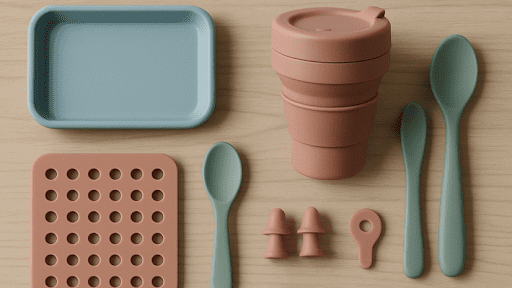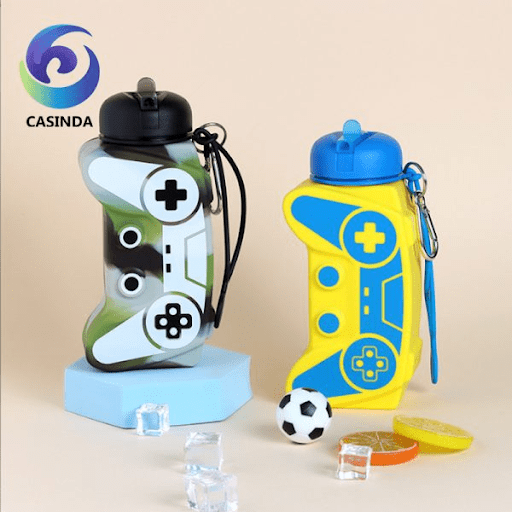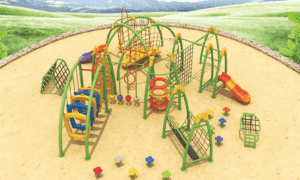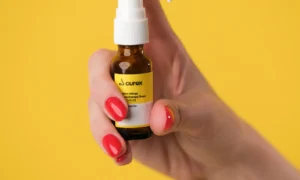Introduction: Why Silicone Is Everywhere in Modern Life
Start noticing and it pops up everywhere: the gasket in your coffee lid, the phone case, the baby pacifier, the small silicone spatula you reach for without thinking. Silicone snuck into daily life because it just… works. It bends, bounces back, and doesn’t throw a fit in the oven. No wonder reusable silicone and every kind of silicone baking mold took off.
With popularity comes questions. People ask is silicone toxic to humans, or does silicone have microplastics hiding in there somewhere. Fair. Let’s walk through the messy, real-world version—not a lab brochure, not internet panic.
The Chemical Nature and Stability of Silicone
What Makes Silicone Chemically Unique
Quick chemistry, no pain: silicone (polysiloxane) has a silicon-oxygen backbone. That Si–O chain is why it’s flexible yet stubbornly stable. It shrugs at heat that would warp plastic.
Curious how is silicone made? It starts as sand (silica). You refine it to silicon, then build long chains with oxygen and a few side ingredients. Beach to bake mat, basically.
People pulled oven racks with the same mitt for years; the mitt’s silicone pads still look new. That kind of “boring” durability is the whole point.
Different Types of Silicone and Their Common Uses

Not one silicone—many. Gels for cushions, elastomers for seals, oils for slip, resins for coatings.
l Medical-grade silicone goes in catheters and implants.
l High-temperature silicone sits under car hoods.
l Food-grade silicone lands in trays and mats.
People wonder are silicone baking mats safe; home bakers use them daily because they’re is silicone bpa free and don’t curl up after a few rounds. Silicone buttons live in remotes, gamepads, industrial panels. Still see comments like is silicone bad for you or is silicone harmful—in most cases, with certified materials, no.
Why Its Chemical Inertness Matters for Safety
Silicone doesn’t like drama. It ignores water, most solvents, random acids—unless you bring strong bases or hydrofluoric acid (please don’t). That’s why silicone cookware can take heat without turning the kitchen into a chemistry lesson.
Side note: is silicon toxic or is silicon poisonous—that’s the element (silicon), not the polymer (silicone). Different conversation. Properly cured silicone ≠ toxic silicone. If you ever smell something harsh from silicone at normal temps, that’s a red flag for fillers or poor curing.
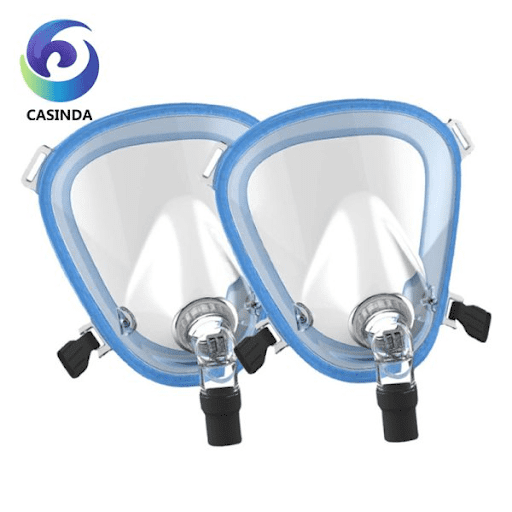
Health Safety: How Silicone Interacts with the Human Body
Skin Contact and Dermal Safety
Wearables are the low-effort test. Silicone straps sit on sweaty skin all day. No rashes, no weird shine. People ask is silicone hypoallergenic—for medical/food-grade types, yes, that’s the whole idea.
Products get tested against is silicone toxic to humans safety expectations before they’re mass-made. My own strap? Two years in, still soft.
Inhalation and Ingestion Concerns
Food contact is where silicone quietly wins. Bottle nipples, sheet pans, air-fryer inserts—it’s everywhere. Are silicone baking mats safe? Yes. Is silicone toxic like plastic? No—silicone behaves differently.
Because it’s is silicone bpa free, you avoid that entire BPA/phthalate saga. One time I left a mold at 200 °C for an hour (forgot the timer). No smell, no smoke—just my cake sadly overdone.
Endocrine and Reproductive Health Considerations
Compared to some plastics tied to hormone issues, silicone is… uneventful (in a good way). Silicone health risks usually show up when someone cheaped out—bad curing, odd fillers.
Cosmetics raise classic questions: is dimethicone toxic? is dimethyl silicone bad for you? At the tiny percentages used in creams and serums, current evidence says no. Stable, non-reactive, doesn’t jump into your bloodstream because you wore foundation.
Regulators keep score. FDA/EFSA review data; ISO 10993 and USP Class VI cover biocompatibility for medical-grade silicone. Manufacturers like CASINDA list ISO 9001:2015, ISO 14001:2015, IATF 16949:2016—not sexy, but that paperwork is how you avoid surprises.
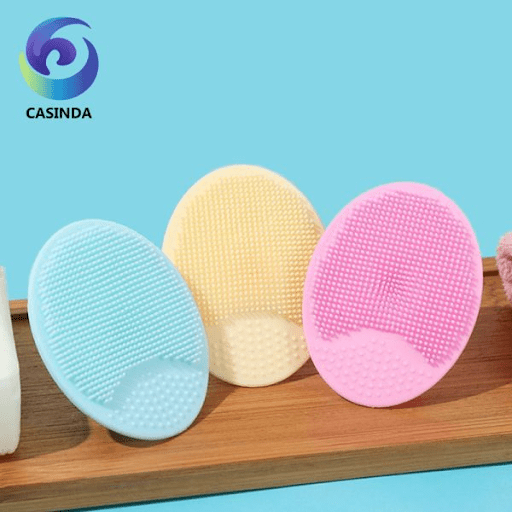
Environmental and Lifecycle Impact of Silicone
Durability and Decomposition
Here’s the trade: long life = less waste, but it sticks around. People ask does silicone have microplastics. No. The backbone is silicon-oxygen, not carbon; it doesn’t crumble into plastic dust the way PET or PP can.
True story: I found a scraper I dropped in the yard half a year earlier. Rinsed it. Looked the same. UV, rain—shrug.
Recyclability and Waste Management
Silicone isn’t biodegradable, but you can recycle it through specialized routes (grind, re-process). Meanwhile, reusable silicone lids/rings replace a small mountain of disposables. That’s the practical math most households care about.
Comparing Silicone with Plastics and Biopolymers
Think middle path: tougher than bioplastics, cleaner than typical petro-plastics. Internet myths about silicon toxic miss that well-made silicone doesn’t carry chlorine, formaldehyde, plasticizers. It’s durable on purpose—so you buy once, not ten times.
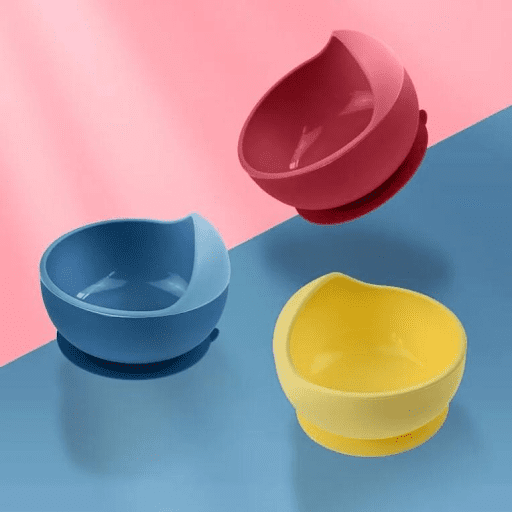
Practical Benefits and Safe Use Tips for Silicone Products
Silicone’s charm is everyday, not flashy. It flexes, seals, cushions, and cleans fast. That small silicone spatula? Slides under eggs without scratching your pan and rinses clean in two seconds. Hard to go back.
Heat range is generous—freezer to oven. People still ask are silicone baking mats safe; certified ones are. Just don’t put them over direct flame (silicone isn’t a broiler hero).
Compared with latex or common plastics, silicone stays calm under heat and sunlight. Medical devices like Fetal Heart Rate Monitors lean on it because it’s repeatedly is silicone toxic to humans tested and feels okay on skin hour after hour.
Tips for Consumers
l Look for “food-grade” or “medical-grade.” Labels matter.
l Replace items if they turn sticky, smell odd, or discolor.
l Keep silicone off open flames; cheap blends can create silicone toxic smoke at silly temperatures.
l Wash your silicone baking mold well; grease, not bacteria, causes most issues.
For Manufacturers
l Keep curing tight; under-cured parts drive complaints and silicone health risks.
l Document lots; audits love paper trails.
l Precision molding > fast molding. Fewer residues, fewer returns.
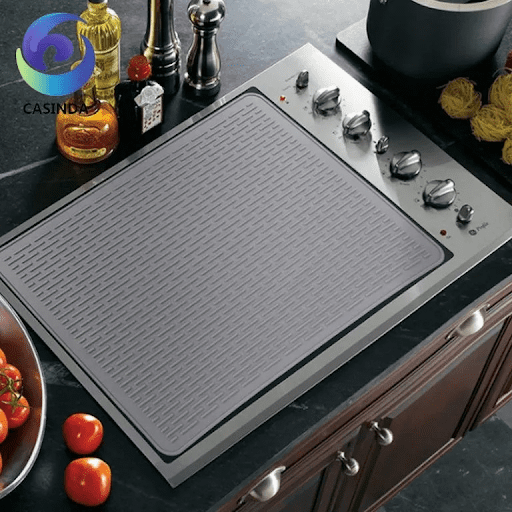
Conclusion: Balancing Safety, Risk, and Benefit
In the real world, silicone earns its place. It’s durable, steady at heat, and simple to maintain. Yes, people ask is silicon toxic, is silicone bad for you, is silicone toxic to humans—and the grounded answer is: good-grade, properly made silicone performs safely.
Of course you’ll see an occasional silicone danger headline—usually tied to fakes or shortcuts. Stick with certified suppliers (CASINDA type who publish their standards) and the everyday experience is boring in the best way.
Boring is underrated in materials. Boring means dinner gets made, seals don’t leak, and kids sleep with pacifiers that don’t fall apart.
FAQ
Q: Is silicone toxic when heated?
A: High-quality mats and molds handle 230 °C without fuss. Low-grade stuff might smoke if you push it. For cookware, pick items that are is silicone bpa free and labeled for oven temps.
Q: Can silicone leach chemicals into food or drinks?
A: Certified food-grade or medical-grade silicone doesn’t leach measurable compounds—and it doesn’t shed microplastics. If you’re weighing is silicone toxic like plastic, remember: different chemistry, different behavior.
Q: Is silicone safe for baby and medical products?
A: Yes. Medical-grade silicone is hypoallergenic and tested under ISO 10993/USP Class VI. So if someone asks is silicone toxic to humans, the practical, tested answer is no—when it’s the real, certified material.

